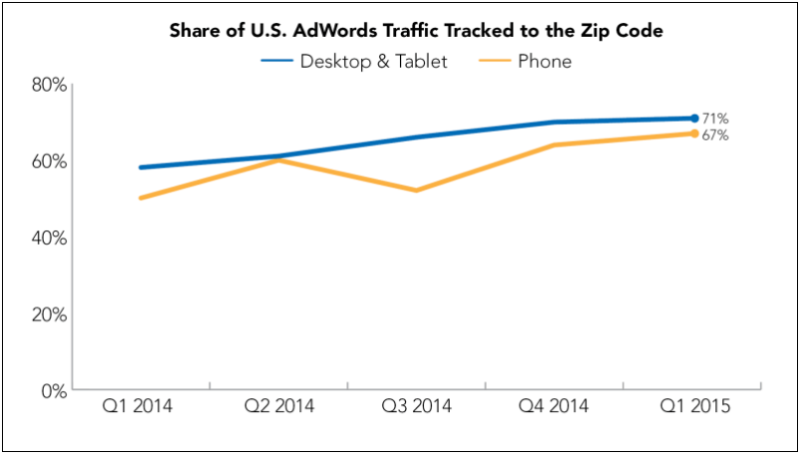In April 2015, I wrote about Google’s progress in steadily tracking more and more user locations to ZIP codes. As ZIP codes are the most granular location type which populates the “Most specific location” field in AdWords geographic reports, the share of traffic that Google assigns to ZIP codes in this field gives advertisers an idea of how well Google is doing at figuring out searcher locations.
At the time, Google was showing strong progress in its location tracking:

Fast forward to today, and Google is tracking more searchers to ZIP codes than ever before. However, most of the progress made only applies to google.com traffic, while search partners are continuing to lag in terms of the share of searchers tracked to a ZIP code.
One big, huge, ginormous caveat
The most important thing to keep in mind with this analysis is that it is based on the locations that Google itself reports. This means that if Google were to, say, expand the use of modeling to infer searcher location to apply to users whose locations it is less confident in, we might see a rise in the share of traffic tracked to a ZIP code without any change in what information Google is actually getting.
As such, the trends shown here could be the result of updates Google itself made in assigning and reporting searcher location, rather than Google actually obtaining more granular information on searcher location over time. They could also be the result of a combination of Google changes and more granular information.
[Read the full article on Search Engine Land.]Some opinions expressed in this article may be those of a guest author and not necessarily Marketing Land. Staff authors are listed here.


